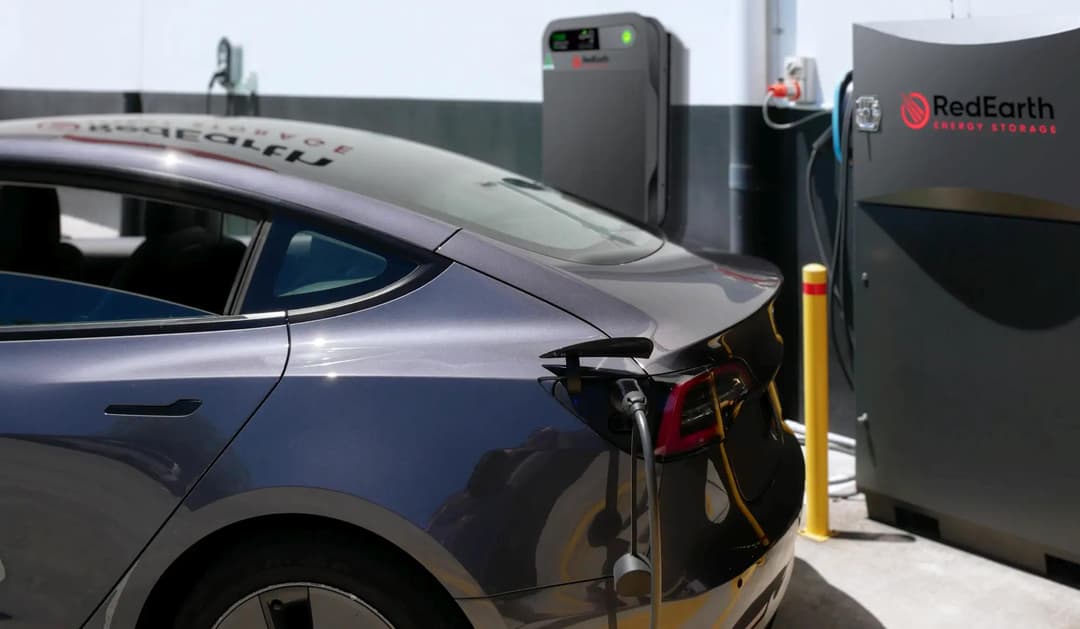Australian V2G manufacturer, RedEarth Energy Storage, has successfully tested its bidirectional (V2G charger) with a right-hand drive converted Ford F-150 Lightning.
Ford F-150 Lightning's in Australua are sold through Australian distributor AusEV who undertake the required required compliance work to ensure it complies with Australian Design Rules.
The demonstration was shared on a LinkedIn post on Friday. The setup comprised a Ford F-150 Lightning plugged into a RedEarth Energy bidirectional V2G charger. In the trial they were able to discharge at 11 kW.
RedEarth are finalising testing of their V2G charger to comply with Australian grid requirements, mainly AS4777.2. The charger is expected to be released by Q2 2025. The RedEarth charger was developed through a licensing arrangement with Ambibox GmbH.
▶️MORE: Australian-Made V2G/V2H Chargers to Launch in 2025

| Vehicle to Load (V2L) | V2L is the most basic application of bidirectional charging. It does not require a bidirectional charger. Instead, a V2L adapter is plugged into your type 2 charging port which allows the car to operate as a portable battery pack with a standard 120/240V power supply. |
| Vehicle to Home (V2H) | V2H involves using energy from your EV to power your home or business. This works in the same way a stationary home storage battery (like the Tesla Powerwall 2) does in reducing grid consumption, except your car needs to be plugged into a bidirectional charge point. |
| Vehicle to Grid (V2G) | V2G involves using energy from your EV to stabilise the grid. This is done through a ‘smart’ bidirectional charger, which is typically part of a VPP (Virtual Power Plant). Subject to defined parameters, your energy retailer will control when your battery is charged or discharged. |
▶️MORE: Watt is Bidirectional Charging, V2G, V2H, V2L?
▶️MORE: Which Electric Cars Have Bidirectional Charging (V2L, V2H, V2G)
When is V2G coming to Australia?
With the imminent listinf of the first V2G bidirectional chargers on the CEC approved list, when is V2G going to be avilable for the masses?
In order for V2G to become a reality for Australian customers, several pieces of the 'system' need to be in place. Below is a breakdown of the key pieces of the V2G puzzle.
Based on discussions with key industry stakeholders, the best case scenario would be second half of 2025, but 2026 is more probable. The big unknown is EV manufacturers and their interoperability with bidirectional chargers. They need to be sufficiently motivated enough to implement the necessary changes. Furthermore, the use of an EV as a storage device will impact battery longevity, warranty etc. They’ll need to be sufficiently incentivised to wear this risk.
To summarise, we are waiting on:
- EV charger brands to release compliant products
- Industry agreement on interoperability i.e. speak the same language
- EV OEM confirmation models are V2G capable
About the author
Stay up to date with the latest EV news
- Get the latest news and update
- New EV model releases
- Get money savings-deal

Privacy policy



